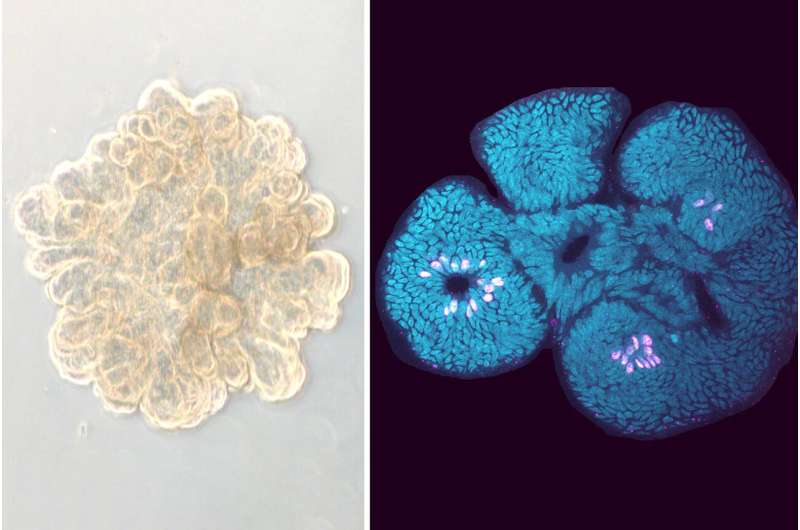This article has been reviewed according to Science X's editorial process and policies. Editors have highlighted the following attributes while ensuring the content's credibility:
fact-checked
peer-reviewed publication
trusted source
proofread
New study demonstrates the efficacy of a promising celiac disease drug at the molecular level

A recent study led by researchers at Tampere University investigated whether a transglutaminase 2 inhibitor has potential as a drug to treat celiac disease. Previous tissue studies have shown that the ZED1227 transglutaminase 2 inhibitor prevents gluten-induced intestinal damage.
The results of the new study, based on an analysis of the molecular activity of more than 10,000 genes, provide very strong evidence that the first successful drug to treat celiac disease may be at hand.
The study was published in Nature Immunology on 24 June 2024. The publication is part of Doctoral Researcher Valeriia Dotsenko's dissertation, which will be examined at Tampere University's Faculty of Medicine and Health Technology in August.
Consuming gluten-containing cereals, i.e. wheat, barley, and rye, leads to an abnormal immune response in the small intestine and the development of celiac disease in up to 2% of the population.
Currently, no drug therapy exists, and a life-long strict gluten-free diet is the only available treatment. However, symptoms and intestinal damage caused by hidden gluten can occur even in patients who are following a strict diet.
"Blood antibody tests and traditional tissue tests do not necessarily tell the whole truth about the condition of the intestinal mucosa," says Keijo Viiri, Adjunct Professor of Cellular and Molecular Biology.
"Our previous studies have shown that even though the intestinal tissue may look healthy, it can still have a molecular 'scar' and, for example, the expression of genes promoting the absorption of vitamins and trace elements may be deficient. This probably explains the often-observed deficiencies of trace elements in celiac patients despite a gluten-free diet."
In a previous tissue study coordinated by Professor Emeritus Markku Mäki from Tampere University, the ZED1227 transglutaminase 2 inhibitor was shown to prevent gluten-induced intestinal damage in patients with celiac disease. However, its mechanisms of action are not fully understood yet.
A new international study led by Tampere University analyzed molecular mechanisms to investigate whether ZED1227 is a potential drug candidate for treating celiac disease.
The study evaluated the efficacy and molecular mechanisms of ZED1227 by analyzing intestinal biopsies collected from celiac patients. The biopsies were taken after a long-term gluten-free diet and again after six weeks of gluten exposure, during which the patients were given 3 grams of gluten per day. At the same time, some patients were given a daily dose of 100 milligrams of ZED1227 and others a placebo.
"By measuring gene activity, we found that orally ingested ZED1227 effectively prevented gluten-induced intestinal mucosal damage and inflammation. In the drug group, the activity of the genes responsible for the absorption of nutrients and trace elements also returned to the pre-gluten exposure level," Viiri says.
In the intestines of celiac patients, inflammation and mucosal damage occur through several cellular and molecular events when gluten binds to human leukocyte antigen (HLA) molecules. However, gluten can only bind to HLA when the small intestine's transglutaminase 2 enzyme first chemically modifies, i.e. deamidates, the structure of gluten. The effectiveness of ZED1227 is based on its ability to prevent deamidation.
"It is still premature to say that ZED1227 will be the celiac medicine of the future eliminating the need for a gluten-free diet. However, it is a strong drug candidate that could potentially be used in conjunction with a gluten-free diet. If or when the ZED1227 medicine becomes available, it would also be useful to apply personalized medicine especially to celiac patients with the high-risk HLA genotype," Viiri points out.
More information: Valeriia Dotsenko et al, Transcriptomic analysis of intestine following administration of a transglutaminase 2 inhibitor to prevent gluten-induced intestinal damage in celiac disease, Nature Immunology (2024). DOI: 10.1038/s41590-024-01867-0















